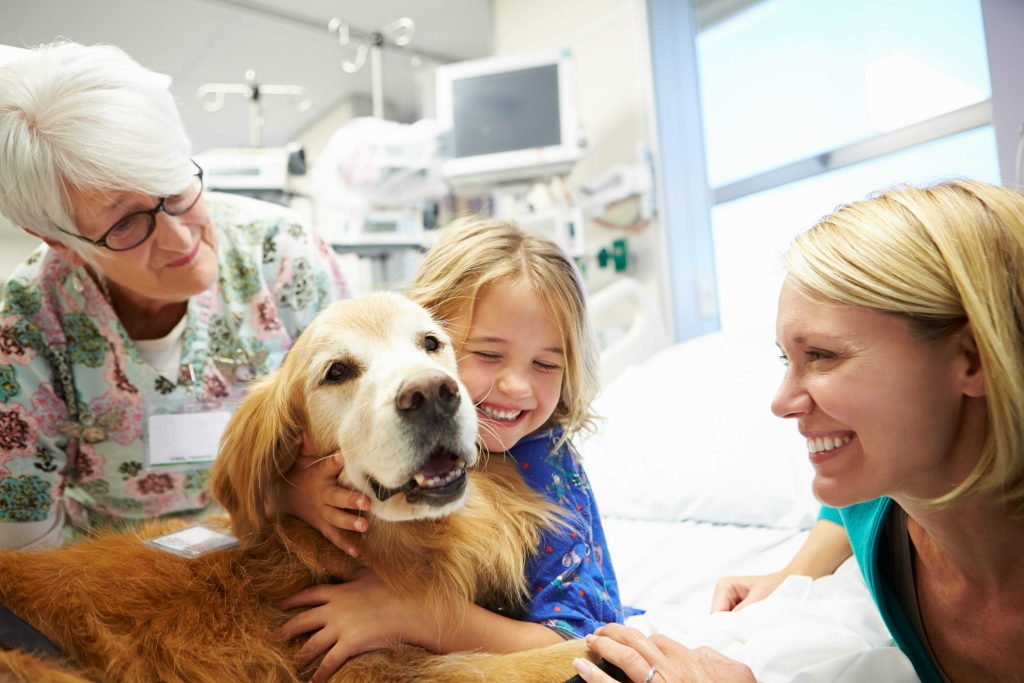The Influence of the Family Environment on Pet Behavior

The Family Influence on Your Furry Friends
Understanding pet behavior goes beyond just observing their actions. The family environment plays a crucial role in shaping how pets react to various situations and stimuli. Factors such as household dynamics, training methods, and social interactions can significantly impact a pet’s behavior.
Key Aspects of Family Influence
- Training Approaches: The methods chosen for training can significantly affect a pet’s behavior. For instance, using positive reinforcement techniques—where pets are rewarded for good behavior with treats or praise—can foster a sense of trust and willingness to learn. Conversely, punishment-based approaches may instill fear, leading to nervous behavior or aggression. Consider a dog that is frequently scolded for barking; rather than reducing the barking, this may simply increase anxiety and lead to more disruptive behavior.
- Emotional Climate: A loving and stable home can lead to more secure pets. Animals, much like humans, thrive in nurturing environments. Research indicates that pets in warm, loving homes often exhibit less stress-related behaviors. For example, cats in a calm household may display a confident demeanor, engaging with their surroundings more freely compared to those in a tense environment where yelling might be commonplace.
- Social Interactions: Regular socialization with family members or guests can enhance a pet’s adaptability. Pets that are frequently introduced to new people or experiences tend to be more sociable. A family that regularly has friends over or takes their dog to the park is likely to have a more well-adjusted and friendly pet, while those that isolate their animals may notice issues such as fear of strangers or aggression during encounters.
Each family contributes a unique set of circumstances. For instance, a pet raised in a noisy, chaotic household may develop anxiety, showing signs such as excessive barking, hiding, or destructiveness, while one from a calm environment might exhibit more relaxed behavior and approach new situations with confidence.
As you delve deeper into the influence of the family environment on pet behavior, it becomes increasingly clear that recognizing these connections can lead to better care and understanding of our animal companions. It is essential to consider not just how we care for pets, but also the environment we create for them. Exploring these complexities can help pet owners nurture positive behaviors and foster a more harmonious relationship with their pets, ensuring that both pets and their families thrive together.
In summary, understanding the nuances of family influence can aid pet owners in creating environments that promote health, security, and happiness for their furry friends. Whether through consistent and rewarding training, fostering a loving emotional climate, or facilitating social interactions, families have the power to shape the well-being of their pets in profound ways. Taking a closer look at these factors not only enhances the pet-owner relationship but also enriches the lives of pets across households.
LEARN MORE: Click here for insights on the adoption process

Shaping Behavior Through Family Dynamics
The family environment acts as a foundational element in determining a pet’s behavioral tendencies. Diverse factors within this environment not only influence how pets behave but also dictate their experiences and interactions in daily life. By observing the interplay between family dynamics and pet behavior, we can start to identify crucial factors shaping our furry companions.
Household Structure and Its Impact
The composition of a household, whether it’s a single-parent family, a multi-generational home, or a group of roommates, can have significant implications on pet behavior. For instance, pets in larger households often have varied interactions and stimuli, which may enhance adaptability. A dog exposed to children, adults, and other animals may grow to be more social and engage comfortably with different people. On the contrary, pets in more isolated settings may develop behavioral issues such as separation anxiety or excessive guarding instincts.
- Routine and Stability: Pets thrive on routine, and a regular schedule within the family can lead to better behavior. For example, a dog that has consistent feeding times, exercise sessions, and play interactions with family members is likely to exhibit balanced behavior. In contrast, a pet in an erratic environment may exhibit anxiety or apprehension.
- Conflict and Its Effects: The emotional landscape of a family can also affect a pet’s behavior. Animals are astute observers and can pick up on stress or tension among family members. Studies show that pets experiencing frequent conflict in the household may show signs of stress, such as hiding, excessive barking, or aggression toward other pets.
- Parental Influence: The role of pet owners—especially responsible adults—plays a pivotal role in guiding pet behavior. A parent who models kind and patient behavior during training sessions teaches the pet to respond positively, forming essential trust in the process. Conversely, a parent who employs harsh training methods may inadvertently cultivate fear-based reactions in pets.
These elements combined not only enhance our understanding of how pets respond to various stimuli but also empower families to create nurturing environments. Awareness of the factors at play within a family can help pet owners improve their approach to raising their animal companions.
As we further explore the intricate relationship between the family environment and pet behavior, it becomes evident that nurturing a stable, positive, and socially enriching environment is fundamental to cultivating healthy, happy pets. By being attuned to these influences and adjusting our actions accordingly, we can build a stronger bond with our animals and promote behavioral outcomes that benefit the entire household.
The family environment serves as a fundamental framework that shapes pet behavior significantly. Various factors within a household—ranging from the emotional climate to the roles family members play—can influence how pets perceive their surroundings and interact with them.Family member dynamics, such as hierarchy or nurturing behaviors, can impact a pet’s confidence and social skills. Pets raised in a supportive and loving atmosphere often demonstrate balanced behaviors compared to those who may experience tension or inconsistency. For example, dogs that live in calm households are less likely to exhibit aggression or anxiety, showcasing the importance of predictable environments.Moreover, the routines established by family members, including feeding schedules, playtime, and training consistency, also contribute significantly to a pet’s behavior. Regular engagements help animals develop a sense of security and understanding, thus fostering positive behaviors.In addition to the emotional environment, the physical space allocated to pets within a home plays a critical role in their behavioral development. Access to safe areas for play, rest, and interaction can lead to healthier pets. Conversely, a cluttered or hostile environment can provoke stress and fear, leading to behavioral issues such as hyperactivity or withdrawal.The impact of children on pet behavior is particularly noteworthy. Pets often adapt to the energy and enthusiasm of younger family members. While this interaction can promote playful and social behavior, it can also lead to stress if pets feel overwhelmed. Thus, education on responsible pet care within the family environment is essential to ensure harmony between pets and their human counterparts. Understanding these dynamics is crucial for pet owners looking to enhance their pets’ well-being. Integrating knowledge about the family environment into pet care practices not only nurtures behavioral improvement but also strengthens the bond between pets and their families. By fostering a conscientious approach, owners can create environments where animals thrive and exhibit desirable behaviors, paving the way for happier households overall.
DIVE DEEPER: Click here to learn more about pet anxiety
The Role of Socialization and Training
Understanding the connection between family environment and pet behavior extends significantly into the realms of socialization and training practices. The nuances of these processes can radically shape a pet’s demeanor and interactions, revealing the pivotal role families play in this developmental aspect.
Socialization Practices
Socialization involves exposing pets to various stimuli, including people, animals, sounds, and environments. Pets that experience diverse social interactions during their formative months are typically better adjusted and more confident. For instance, families that actively introduce their puppies to a variety of experiences—like different types of people, public spaces, and other animals—often see their dogs develop impressive social skills. Research has demonstrated that lack of early socialization can lead to fearfulness, aggression, or behavioral issues later in life.
- Structured Playdates: Incorporating playdates with well-behaved animals can instill appropriate social behaviors in pets. A well-supervised interaction, guided by family members, allows pets to learn boundaries and engage in positive play, ultimately leading to improved social skills.
- Community Involvement: Families who participate in community events, such as dog parks or pet-friendly festivals, provide their pets with broader experiences. These outings can greatly enrich a pet’s life and enhance their adaptability to new scenarios.
Training Methods and Family Involvement
The training dynamics within a family can also play a significant role in shaping a pet’s behavior. The consistency of training techniques is vital; pets thrive when everyone in the family adheres to similar commands and reinforcement methods. This prevents confusion and enhances communication between pets and their owners.
- Positive Reinforcement: Families that practice positive reinforcement—rewarding pets for desired behaviors—can foster a trusting relationship with their pets. This method encourages pets to be more responsive to training and can reduce behavioral problems commonly linked to anxiety or frustration.
- Parent-Child Roles: Involving children in training sessions not only teaches them responsibility but also helps in developing the pet’s behavior. A child who learns to command and reward their pet effectively can instill discipline while simultaneously strengthening their bond.
Understanding Behavioral Responses
Additionally, family members should remain cognizant of how their actions can influence a pet’s behavior. Emotional responsiveness, tone of voice, and even body language can send strong signals to pets. For example, a family member reacting with frustration during a pet’s misbehavior can exacerbate anxiety or fear-driven responses in the pet. In contrast, showing calmness and patience can lead to a more composed and relaxed pet.
Given the powerful interplay between family dynamics and pet behavior, it becomes evident that the collective efforts of family members to engage in consistent training and socialization can result in well-adjusted, happier pets. This reflects not only in their behavior but enhances the overall harmony of the family unit, as pets become more integrated and responsive companions within the household.
DISCOVER MORE: Click here to learn about the importance of socialization for your pet
Conclusion: The Power of Family Dynamics on Pet Behavior
In conclusion, the influence of the family environment on pet behavior is profound and multifaceted. The nurturing and interactive dynamics within a household significantly shape how pets develop, socialize, and respond to their surroundings. From socialization practices that introduce pets to diverse experiences to structured training methods that instill consistency and security, families play a crucial role in creating well-adjusted pets.
Moreover, the emotional climate established by family members, including their cues, tones, and reactions, defines how pets interpret and respond to their environments. Understanding this relationship is vital for pet owners looking to foster positive behaviors and minimize issues such as anxiety or aggression. For example, families that emphasize patience and calmness during training not only enhance their pet’s learning but also cultivate a deeper bond that enriches the entire household experience.
Furthermore, as pet ownership continues to grow in the United States, the responsibility of creating a supportive family environment becomes even more essential. As we consider adopting or raising pets, it is crucial to recognize that our day-to-day interactions and attitudes will ultimately influence our furry companions’ ability to thrive and contribute positively to family life.
Ultimately, investing time in socialization and consistent training, coupled with an awareness of emotional interactions, will not only lead to better-adjusted pets but will also enhance the overall family dynamic. In striving for this balance, families can ensure that their pets are not just animals in the home, but cherished members whose behavior contributes to a harmonious living environment.



